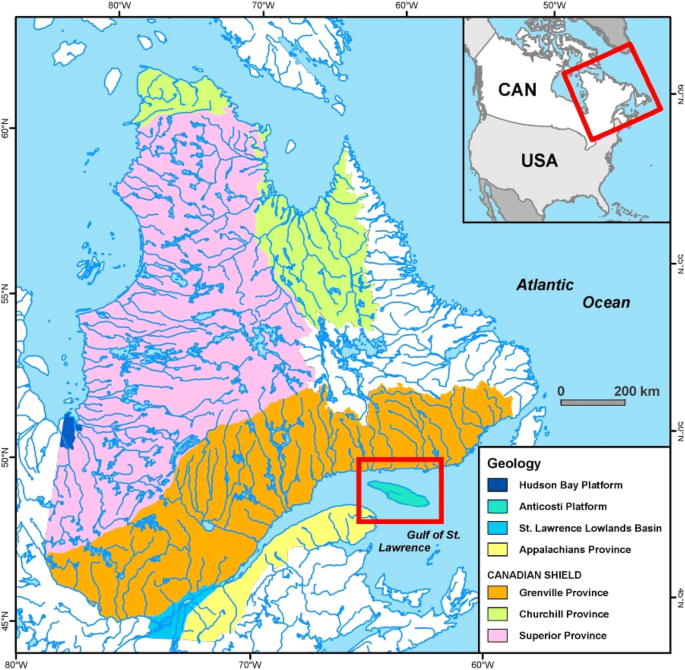Anticosti Island is located in the Anticosti sedimentary basin, an Ordovician/Silurian carbonate platform. Like most remote and off-grid regions in Canada, it relies heavily on fossil fuels for energy supplies. An assessment of deep geothermal resources was achieved in this area with the objective of diversifying energy resources to help develop renewable energy for villages deserved by micro-grid systems.
Direct geothermal heating seems feasible, with 40–55 °C reached at the base of the sedimentary basin (2 km depth) under the main village of the island. The basal sedimentary thermal unit (Romaine) was considered as a possible reservoir for oil and gas exploration due to its permeability, which can be up to 14 mD according to Roliff (1968). A geothermal doublet can be envisioned at such permeability, but further studies to better define the hydraulic properties of this unit are nonetheless needed to confirm this hypothesis. This can be combined with extensive work on fault mapping and characterization to better constrain model hydraulic properties and simulate fluid flow, both at the island and reservoir scales for further geothermal resource characterization of the Anticosti sedimentary basin. Interestingly, the sensitivity of temperature prediction in the thermal units at the base of the sedimentary basin is 29% less than in the deep Precambrian basement in contact with the mantle.
Read More.........
Gascuel, V., Bédard, K., Comeau, F. et al. Geothermal resource assessment of remote sedimentary basins with sparse data: lessons learned from Anticosti Island, Canada. Geotherm Energy 8, 3 (2020). https://doi.org/10.1186/s40517-020-0156-1
